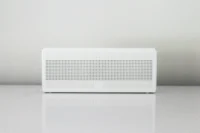- Home
- Articles
- Architectural Portfolio
- Architectral Presentation
- Inspirational Stories
- Architecture News
- Visualization
- BIM Industry
- Facade Design
- Parametric Design
- Career
- Landscape Architecture
- Construction
- Artificial Intelligence
- Sketching
- Design Softwares
- Diagrams
- Writing
- Architectural Tips
- Sustainability
- Courses
- Concept
- Technology
- History & Heritage
- Future of Architecture
- Guides & How-To
- Art & Culture
- Projects
- Interior Design
- Competitions
- Jobs
- Store
- Tools
- More
- Home
- Articles
- Architectural Portfolio
- Architectral Presentation
- Inspirational Stories
- Architecture News
- Visualization
- BIM Industry
- Facade Design
- Parametric Design
- Career
- Landscape Architecture
- Construction
- Artificial Intelligence
- Sketching
- Design Softwares
- Diagrams
- Writing
- Architectural Tips
- Sustainability
- Courses
- Concept
- Technology
- History & Heritage
- Future of Architecture
- Guides & How-To
- Art & Culture
- Projects
- Interior Design
- Competitions
- Jobs
- Store
- Tools
- More
Why Architecture Students Need Feel Good Productivity for Success and Well-Being
Discover how architecture students can embrace "feel-good productivity" to balance creativity, efficiency, and well-being. Learn strategies to manage intense workloads, reduce burnout, and foster innovation by integrating self-care and enjoyable practices into daily routines for a healthier, more inspired approach to academic success.

Architecture students face a unique blend of creativity, precision, and relentless deadlines. Balancing studio work, design critiques, and academic responsibilities often leaves us feeling overwhelmed and drained. It’s not just about getting things done—it’s about how we feel while doing it. That’s where the concept of “feel-good productivity” becomes a game-changer.
When we focus on productivity that prioritizes both efficiency and well-being, we unlock our full potential. It’s not just about checking tasks off a list; it’s about creating an environment where we thrive mentally, emotionally, and creatively. For architecture students, this approach can transform how we tackle demanding workloads and stay inspired through the process.
By embracing feel-good productivity, we can reduce burnout, maintain our passion for design, and produce work we’re genuinely proud of. It’s time to rethink how we work and ensure our productivity fuels our growth, not just our to-do lists.

Table of Contents
ToggleThe Importance Of Productivity In Architecture Studies
Architecture studies require a refined balance between creativity, technical skills, and time management. Productivity becomes a cornerstone of success in this demanding field.

Demands And Challenges Of Architecture Education
Architecture programs combine theoretical knowledge with practical execution. Students often face challenges like mastering design principles, learning complex software, and producing detailed models or drawings. Tight deadlines, frequent critiques, and long study hours add to the intensity, leaving little room for error. This demanding environment pushes us to work efficiently while maintaining high creativity.
The Role Of Productivity In Managing Workload
Effective productivity strategies help navigate extensive workloads. By prioritizing tasks like project planning and resource allocation, we gain better control over timelines. Managing time efficiently allows us to meet academic expectations without compromising creativity or quality. Productivity also reduces unnecessary stress, keeping us focused and motivated in a fast-paced learning environment.
Understanding Feel Good Productivity
Feel-good productivity prioritizes a balance between performance and well-being. It shifts focus from solely completing tasks to enhancing mental, emotional, and creative states.

What Is Feel Good Productivity?
Feel-good productivity is an approach that combines task completion with personal well-being. Unlike standard productivity methods, it integrates self-care and enjoyment into the workflow. For architecture students, this can mean aligning workload management with activities that boost creativity and reduce burnout.
For example, taking short breaks for hobbies, designing in a relaxed setting, or scheduling projects during peak energy hours helps maintain efficiency. This method doesn’t compromise academic rigor but ensures students sustain motivation and health throughout their studies.
How It Differs From Traditional Productivity Approaches
Traditional productivity prioritizes output and deadlines, often disregarding emotional states. While these methods focus on measurable results, they may lead to exhaustion or reduced creativity over time.
Feel-good productivity, on the other hand, emphasizes the quality of engagement and self-satisfaction during tasks. In architecture studies, this could involve simplifying multitasking through organized workflows or incorporating reflective practices like journaling design ideas. By embedding positivity into the process, students can achieve consistency without sacrificing mental or emotional balance.
Why Architecture Students Need Feel Good Productivity
Feel-good productivity supports architecture students in overcoming challenges tied to intense academic demands. It fosters a healthier mindset, enabling students to sustain both creativity and well-being in a rigorous learning environment.

Combating Burnout And Stress
Architecture students encounter persistent deadlines, critiques, and multitasking pressures. Feel-good productivity minimizes burnout risks by promoting restorative practices like scheduled downtime or enjoyable mini-projects. Incorporating relaxation into study routines improves focus and sustains energy levels for demanding tasks.
Encouraging Creativity And Innovation
Creativity flourishes when students experience mental clarity and positive emotions. Feel-good productivity integrates inspiring activities, such as exploring art forms or nature walks, into daily schedules. These methods spark fresh ideas while reducing overexertion, strengthening innovative thought processes for design challenges.
Balancing Academic And Personal Life
Balancing coursework with personal interests increases productivity and satisfaction. Feel-good productivity supports this equilibrium by encouraging flexible schedules and integrating personal passions into design projects. Engaging in fulfilling activities alongside academic responsibilities builds resilience and promotes consistent performance in architecture studies.
Tips For Embracing Feel Good Productivity
Feel-good productivity combines effective task management with mental and emotional well-being. By adopting mindful strategies, architecture students can maintain creativity and energy throughout their demanding academic schedules.

Setting Realistic Goals
Setting realistic goals creates a focused and manageable workflow. We recommend breaking large tasks into smaller, actionable steps. For instance, instead of completing a full design project in one sitting, outline phases such as concept sketching, modeling, and rendering. Prioritize tasks based on deadlines and complexity, ensuring progress feels attainable. Use daily or weekly goals to track advancements while avoiding overwhelm.
Incorporating Breaks And Self-Care
Regular breaks and self-care enhance focus and prevent burnout. Incorporate 5-10 minute breaks after every hour of work to rest and recharge. Use this time for stretching, quick walks, or mindfulness exercises to reset. Dedicate some evenings to hobbies or relaxing activities like painting or listening to music. These practices improve overall well-being, making study sessions more productive.
Leveraging Tools And Techniques For Efficiency
Efficient tools and techniques streamline workflows. Use project management apps like Trello or Notion to organize tasks and deadlines. Software shortcuts in programs such as AutoCAD or Rhino save hours during modeling or drafting. Time-blocking or the Pomodoro Technique ensures optimal productivity by allocating focused periods for work and breaks. These methods allow us to sustain high performance without unnecessary stress.
Benefits Of Feel Good Productivity For Architecture Students
Feel-good productivity fosters a balanced approach to managing academic and creative demands, enabling architecture students to thrive in a high-pressure environment. This approach supports mental clarity, emotional resilience, and consistent performance.

Enhanced Focus And Motivation
A positive and balanced workflow sharpens focus and sustains motivation throughout demanding schedules. When we integrate enjoyable elements like breaks or relaxing surroundings into our routines, distractions decrease, and energy levels stabilize. This encourages long-term engagement with complex tasks such as refining models, learning new software, or preparing presentations. By aligning effort with personal well-being, productivity becomes more fulfilling and effective.
Improved Overall Well-Being
Prioritizing mental and emotional health enhances overall well-being, reducing the chances of burnout common in architecture programs. Incorporating self-care activities such as meditation, exercise, or engaging in hobbies invigorates creativity and supports stress management. When we cultivate mental clarity and emotional balance, we’re better equipped to navigate tight deadlines and frequent critiques while maintaining a healthier mindset.
Better Academic And Design Outcomes
Adopting feel-good productivity methods improves the quality of academic work and creative projects. When we operate from a state of mental and emotional equilibrium, our creative thinking and problem-solving skills improve. This leads to more innovative design solutions, polished presentations, and higher-quality deliverables. By managing workloads effectively and ensuring a positive workflow, students achieve optimal outcomes without compromising well-being or creativity.
Conclusion
Feel-good productivity offers architecture students a practical framework to manage their demanding workloads while fostering creativity and well-being. By focusing on balanced routines that integrate personal care and purposeful work, students can enhance their ability to meet academic expectations without sacrificing mental or emotional health. This approach prioritizes sustainable practices, aligning productivity with positivity, which is essential for innovation and resilience in architecture studies.
- architecture school efficiency
- architecture student mental health
- architecture student motivation
- Architecture Student Productivity
- architecture student work-life balance
- boost productivity in architecture
- feel good productivity tips
- healthy habits for architecture school
- improving focus for architecture students
- mindfulness for architecture students
- self-care for architecture students
- stress management in architecture school
- study tips for architecture students
- success tips for architecture students
- Time Management for Architecture Students
- well-being for architecture students
Submit your architectural projects
Follow these steps for submission your project. Submission FormLatest Posts
Architectural Education: Shaping Future Architects Through Creativity and Innovation
Explore the transformative realm of architectural education and its pivotal role in...
Top Reasons Every School Should Invest in High-Quality Mats
Schools need to freely function as agents of change for the future, where...
Benefits of Earning a GED or High School Diploma Online
Having a high school diploma or GED opens the door to better...
Graduating Architecture School: Challenges, Lessons, and Steps for Future Success
Graduating architecture school is a transformative journey of creativity, resilience, and discipline....












Leave a comment